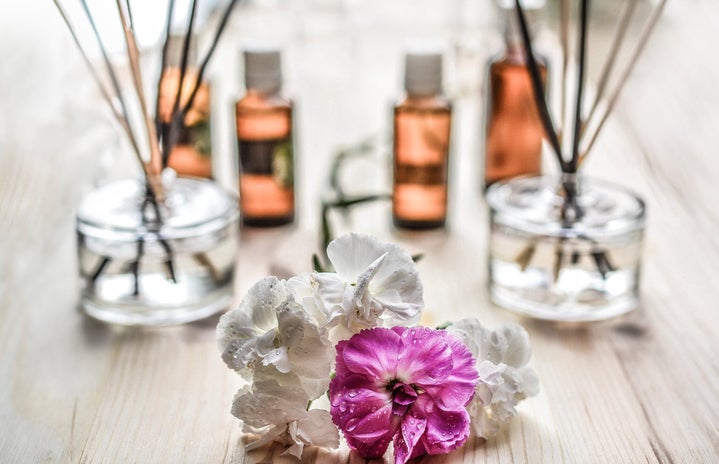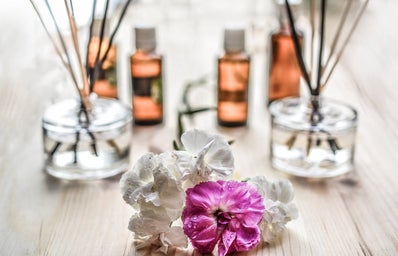Ever heard of holistic medicine? Well, holistic medicine has been becoming more and more popular these past few years, and for good reason. Holistic medicine, usually associated with eastern medicine, is about achieving balance and curing the underlying problems that are affecting a person’s wellness. It takes into consideration the mind, body, emotions, and soul of a person. For example, if a person is experiencing a headache, a holistic medicine practitioner will take into consideration possible issues with their diet, sleep schedule, and any social or personal issues that could be contributing to high levels of stress and distress.
Some well-known fields in holistic medicine are acupuncture, reiki (also known as energy healing), massage therapy, cupping, and Ayurveda. Cupping is a technique used in Eastern Medicine to relieve muscle tension and pain. It’s when you take a circular cup and light a long stick on fire. This flame is then placed inside the cup and the cup immediately placed on the skin. This process creates a vacuum within the cup so when the cups are removed it leaves a round bruise on the skin from the vacuum within the cup drawing all the blood upwards. Ayurveda is balancing the body’s systems through things like breathing techniques, meditation, aromatherapy, diet, and other herbal treatments. I would classify the use of essential oils under Ayurveda. While most essential oils are diffused, some of the ones I’m going to be talking about can be ingested in small quantities. It’s extremely important that when you buy essential oils that you do your research. While I love bargaining and being as economical as possible, essential oils are not something you want to be frugal with. It’s true quality is associated with price, and since these are a tool for your wellness, it’s important that they’re of good quality, that they’re pure, and that you’re getting exactly what you ordered. So for essential oils, Amazon might not be your best friend. I know two-day shipping is incredibly tempting, but the reality is that it’s extremely hard to tell who a reputable seller is. For buying essential oils online I’d recommend going straight to the distributor’s website, that way you know you’re not getting a knock off. Additionally, make sure that you’re purchasing essential oils and not fragrance oils! Essential oils are 100% natural and made from plant extracts. Fragrance oils, on the other hand, are synthetic so they don’t have the same properties and can sometimes be irritating. So, here are five trusty essential oils that I use to help with my wellness.
- Rosemary
-
Rosemary was one of the first essential oils I acquired, and it’s still one of my favorites. As a plant, rosemary is part of the Lamiaceae family. This is one of the largest plant families and includes many stars such as different strains of mint, lavender, thyme, basil, oregano, and sage.
Over the years, there have been many studies done on essential oils, rosemary included. So while they can’t yet explain why, scientists have noticed that rosemary has some antibacterial properties. Now don’t mistake me for meaning that if you have pneumonia you should diffuse some rosemary and the next day you’ll be all better. Instead, think of rosemary essential oil and holistic medicine in general as helping you make your body, mind, soul, and emotional state stronger, so it’s more difficult for you to get pneumonia in the first place. For instance, Healthline talks about how scientists believe these antibacterial properties weaken the walls of cells allowing for your body or antibiotic-medication to fight off the bacteria more easily.
As a more personal example, during finals week I often find myself staying up even later than normal. To the point where after a few days I can feel myself beginning to get sick. I get that feeling of a lump in the back of my throat and I know if I keep up my current behavior I’m going to get sick. So what I do to give myself a little boost in rebalancing my body is before I go to bed, I load up my diffuser with four to six drops of rosemary (more than you would normally do for a small diffuser), and I take my vitamins – women’s One a Day, fish oil, vitamin D, and extra vitamin C (2000mg). Yeah, 2000mg seems like a lot, but I can actually say that I was given the okay to take that much by a medical professional. She even told me it was okay to take 2000mg every two hours if you’re sick. Fun fact: since vitamin C is produced naturally by the body, your body will just flush out all the extra.
Having antibacterial properties is only one of the benefits of rosemary. Rosemary was tested against a neutral oil like grapeseed oil and in men with androgenetic alopecia, it was found to help hair thickness. Additionally, there have been studies where it was found to stimulate hair growth by 44%. After you shower, and your hair is wet simply take a couple of drops and massage them into your scalp. Rosemary is also associated with pain relief, reducing inflammation, increasing blood circulation, and easing stress.
- Thieves or OnGuard
-
Now while this blend of essential oils has a couple of different names, it is essentially the same thing. This blended formula is pretty old, and it is said to date back to the 15th century. During this time, the bubonic plague was ravaging Europe, killing millions. Bodies were piling up everywhere on the street because people were too afraid of touching the dead and contracting the plague. The story goes that the only people who weren’t afraid to touch the dead were the spice traders. These spice caravans traveled across the continent from China, India, Persia, and Egypt up into Europe. It is said that the spice traders would rob the dead bodies and not get sick because of the blend of spices they carried with them. That blend the spice traders carried is when this modern-day blend is based on.
The essential oil blend Thieves or OnGaurd consists of cinnamon, clove, rosemary, eucalyptus, and then a citrus either sweet orange or lemon depending on the brand. This blend is amazing to diffuse and is associated with helping strengthen your immune system, having antibacterial properties, helping with sinuses, nasal congestion, and cardiovascular health.
Over winter break my whole immediate family and many of my extended family that were up north visiting caught the flu. I had yet to get sick but I was starting to feel as if I was about to. My mom was sure I was coming down with it. This was two or three days before new years and I had made plans. I followed my usual routine of increasing my sleep, taking my vitamins with extra vitamin C, drinking lots of tea and water with Copaiba (the next essential oil I will be talking about), and smelling my OnGaurd since I had left my diffuser at school. I didn’t get up getting the flu, felt 100x better, and was able to celebrate New Years.
- Copaiba
-
Copaiba essential oil comes from the tree trunks of trees in South America. My favorite way to use copaiba is to ingest it but you can also diffuse it. As I previously mentioned, you can put one 1-3 drops of it in tea or water to get the benefits. A little tip for adding it to your drink, do not add it into a plastic container, especially repeatedly. When I first started to use Copaiba I was adding it to ceramic cups and I didn’t run into any issues. But over winter break I began adding it to my 32 fl. oz. Nalgene bottle and after finishing, every couple hours, I would repeat the process. Weeks later after washing out my Nalgene bottle I could still taste hints of the oil. Another warning, Copaiba has a very distinct taste. I would recommend starting out with only a drop and then maybe escalating. Personally, I have grown to like the taste but it can’t really be related to any other flavor.
Copaiba helps to boost the immune system and is beneficial for the digestive, respiratory, and nervous systems as well. Applying it topically, to the skin, can also help reduce pain and inflammation. Some of these properties, specifically helping to reduce pain, inflammation, and nausea are similar to CBD. Depending on how much you know about cannabinoids, you might know that CBD is not psychoactive, unfortunately, neither is Copaiba. Copaiba is known as a cannabinoid, however, this just means that it reacts to the cannabinoid receptors, specifically CB2.
- Bergamot
-
Bergamot is a citrus and comes from the bergamot orange. Like many citruses, bergamot helps with brain stimulation. If you’re ever feeling tired, sniffing some bergamot or orange essential oils, even straight from the container can help wake you back up. Bergamot is photosensitive so if you but some on your skin or on just about anything it will react to the light and turn brown possibly staining your skin. Besides stimulating your brain, bergamot can help to reduce stress and even is associated with helping lower cholesterol. Some of its compounds are also correlated with having antibacterial and anti-inflammatory properties. My favorite use of bergamot is to diffuse it while I’m studying.
- Lavender
-
Finally, one of the most well known essential oils for wellness, Lavender. While lavender is similar to bergamot in the fact that they both have stress-reducing, antibacterial, and anti-inflammatory properties. To me, the biggest difference between these two is that lavender is also helpful with insomnia and getting a better night’s rest. It’s also been noted that lavender is helpful in treating depression and anxiety. Lavender can also be used on mosquito bites to help relieve the itch.
With essential oils and wellness of the mind and body becoming more popular essential oils are easier to find than ever. They’re making pure essential oils and blends to help with moods, health, sleeping, and all sorts of things. Also, after you start to build up your collection you can begin making blends right in your diffuser! Have fun with it and take care of yourself.



